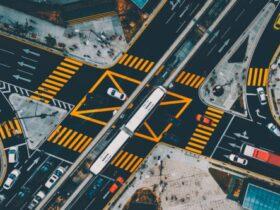With rapid innovation taking place in the technological fields like- AI, IoT, data analytics, smart cities have been one of the fast-paced developments to occur using the above-stated technologies.
So, what exactly is a smart city? A smart city refers to an urban area that is well-equipped with basic infrastructure for providing its citizens a quality lifestyle.

As per an estimate provided by the UN, it is predicted that 68% of the global population is estimated to reside in the urban areas by 2050. This is now resulting in a push to make our cities more connected, efficient and citizen-friendly backed by powerful administration and smart technologies. For any smart city, big data lies at its core of technological innovations. Gaining insights on data from connected devices, agencies, and other data sources, the cities will now be able to optimize their operations and manage the changes with greater effectiveness.
Big Data Benefits for Smart Cities
- Smarter Traffic Management
The smart cities have already started harnessing on the data for delivering enhanced urban mobility and this trend is estimated to rise in the coming years. It is estimated that the revenue driven from traffic-focused smart city technologies is going to be valued at $4.4 billion by 2023 as compared to $2 billion in 2029.
The base for the smart-traffic decision system lies on big data analytics. It helps in breaking down the information and sharing the information across different departments. This solution then collects all types of traffic information using sensors for enabling real-time traffic monitoring and control. Additionally, it can also be used for predicting traffic trends that are based out of practical simulations and mathematic models. Data analytics is being used by smart city planners for determining the reasons behind any traffic congestion. City planners also tend to use data analytics for determining patterns pertaining to most preferred parking slots by the vehicle owners.
- Better Public Safety
Significant data insights can be used for illustrating the most possible causes of crime and can be used for determining such areas in the city. Smart cities are extensively data-driven and this makes it easier for initiatives pertaining to the crime. Data is used for determining the high-crime prone zones in the city.
The authorities can act ‘smarter’ in such areas by predicting and then preventing crimes before they strike. This can also be of great aid for the emergency services that can redistribute resources with enhanced efficiency to counterattack crime in the areas that have high probability of crime occurrence. Different data sets can be combined for tackling situations like crises in unlikely disaster events.
- Effective Spending
In any city, a lot of investment is made for transforming the city. The money spent by the city planners can be either- for renovation or remodelling of the city. When big data is used, collected data is used for suggesting the major impacted areas regarding what kind of upgrades the city needs. By carrying out a proper analysis of this data, investments can be made accordingly for the required areas.
- City Planning
Mapping the needs related to infrastructure in a smart city is relatively easy when high and accurate data is used for exactly highlighting the development areas. For the cities that are on the path of becoming a smart city look to deploy a robust data strategy. The data used by these cities used for streamlining and optimizing operations have to be rich and quite abundant.
- Sustainable Growth
Regular analysis of the growth of a smart city helps in gaining continuous updates regarding any changes as in when needed. The volume of output generated post-technology deployment helps in getting a clear idea regarding the desired developments and this is one of the key growth drivers to sustainability. Data plays a key role in determining the outcomes of development taking place in the city.
Conclusion
For a smart city, big data plays an indispensable role when it comes to processing the data. This data is collected from the various devices deployed all over the city such that it becomes easier to recognize the patterns as well as the needs of a city. Companies like ESDS have been playing a key role in developing Indian smart cities like- Pune and Bhubaneshwar.















